Related Research Articles
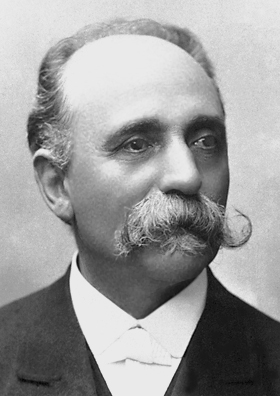
Camillo Golgi was an Italian biologist and pathologist known for his works on the central nervous system. He studied medicine at the University of Pavia between 1860 and 1868 under the tutelage of Cesare Lombroso. Inspired by pathologist Giulio Bizzozero, he pursued research in the nervous system. His discovery of a staining technique called black reaction in 1873 was a major breakthrough in neuroscience. Several structures and phenomena in anatomy and physiology are named for him, including the Golgi apparatus, the Golgi tendon organ and the Golgi tendon reflex.
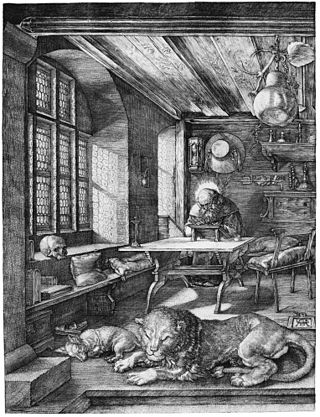
Engraving is the practice of incising a design onto a hard, usually flat surface by cutting grooves into it with a burin. The result may be a decorated object in itself, as when silver, gold, steel, or glass are engraved, or may provide an intaglio printing plate, of copper or another metal, for printing images on paper as prints or illustrations; these images are also called "engravings". Engraving is one of the oldest and most important techniques in printmaking.

Catherine Greenaway was an English Victorian artist and writer, known for her children's book illustrations. She received her education in graphic design and art between 1858 and 1871 from the Finsbury School of Art, the South Kensington School of Art, the Heatherley School of Art, and the Slade School of Fine Art. She began her career designing for the burgeoning holiday card market, producing Christmas and Valentine's cards. In 1879 wood-block engraver and printer, Edmund Evans, printed Under the Window, an instant best-seller, which established her reputation. Her collaboration with Evans continued throughout the 1880s and 1890s.

Don Camillo and Peppone are the fictional protagonists of a series of works by the Italian writer and journalist Giovannino Guareschi set in what Guareschi refers to as the "small world" of rural Italy after World War II. Most of the Don Camillo stories came out in the weekly magazine Candido, founded by Guareschi with Giovanni Mosca. These "Little World" stories amounted to 347 in total and were put together and published in eight books, only the first three of which were published when Guareschi was still alive.
Events in the year 1810 in Art.

Wood engraving is a printmaking technique, in which an artist works an image into a block of wood. Functionally a variety of woodcut, it uses relief printing, where the artist applies ink to the face of the block and prints using relatively low pressure. By contrast, ordinary engraving, like etching, uses a metal plate for the matrix, and is printed by the intaglio method, where the ink fills the valleys, the removed areas. As a result, the blocks for wood engravings deteriorate less quickly than the copper plates of engravings, and have a distinctive white-on-black character.

Postal notes were the specialized money order successors to the United States Department of the Treasury's postage and fractional currency. They were created so Americans could safely and inexpensively send sums of money under $5 to distant places.

Camillo Rondani was an Italian entomologist noted for his studies of Diptera.
Events from the year 1618 in art.

Camillo Procaccini was an Italian painter. He has been posthumously referred to as the Vasari of Lombardy, for his prolific Mannerist fresco decoration.

Camillo Boccaccino was an Italian painter of the Renaissance period, active mainly in Cremona and regions of Lombardy.
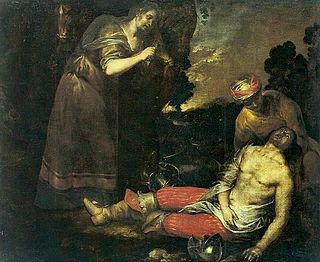
Luciano Borzone was an Italian painter of a late-Mannerist and early-Baroque styles active mainly in his natal city of Genoa.
Events from the year 1738 in art.

Giuseppe Diamantini was an Italian painter and printmaker of the Baroque period, active mainly in Venice. Some sources cite varying dates for his life span including 1660–1722.
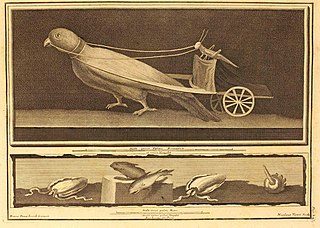
Rocco Pozzi, was an Italian painter and engraver of the Baroque period, active around 1750.
Carlo Biffi (1605–1675) was an Italian painter of the Baroque period. He was born in Milan, where he trained with Camillo Procaccini.

Auve is a commune in the Marne department in northeastern France. The source of the river Auve is in the commune.
Gatcombe House is a 15,234 sq ft (1,415.3 m2) manor house in Gatcombe on the Isle of Wight, England. The original building was constructed by the Stur (Estur) family as noted in the Domesday Book. St. Olave's Church, built next to the manor to serve as its chapel, was dedicated in 1292. It also belonged at one time to the Lisles of Wootton.
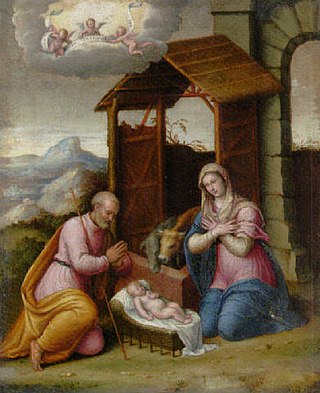
Camillo Filippi was an Italian painter who flourished about the middle of the 16th century.

Johann Jakob Frey the Elder was a Swiss engraver.
References
- ↑ Witcombe, Christopher L. C. E. (2004). Copyright in the Renaissance: Prints and the Privilegio in Sixteenth-Century Venice and Rome. BRILL. pp. 211–. ISBN 978-90-04-13748-6 . Retrieved 18 January 2013.
- ↑ Lincoln, Evelyn (3 September 2012). "The studio inventory of Camillo Graffico, engraver and fountaineer". Print Quarterly. 29 (3): 259–280. ISSN 0265-8305.